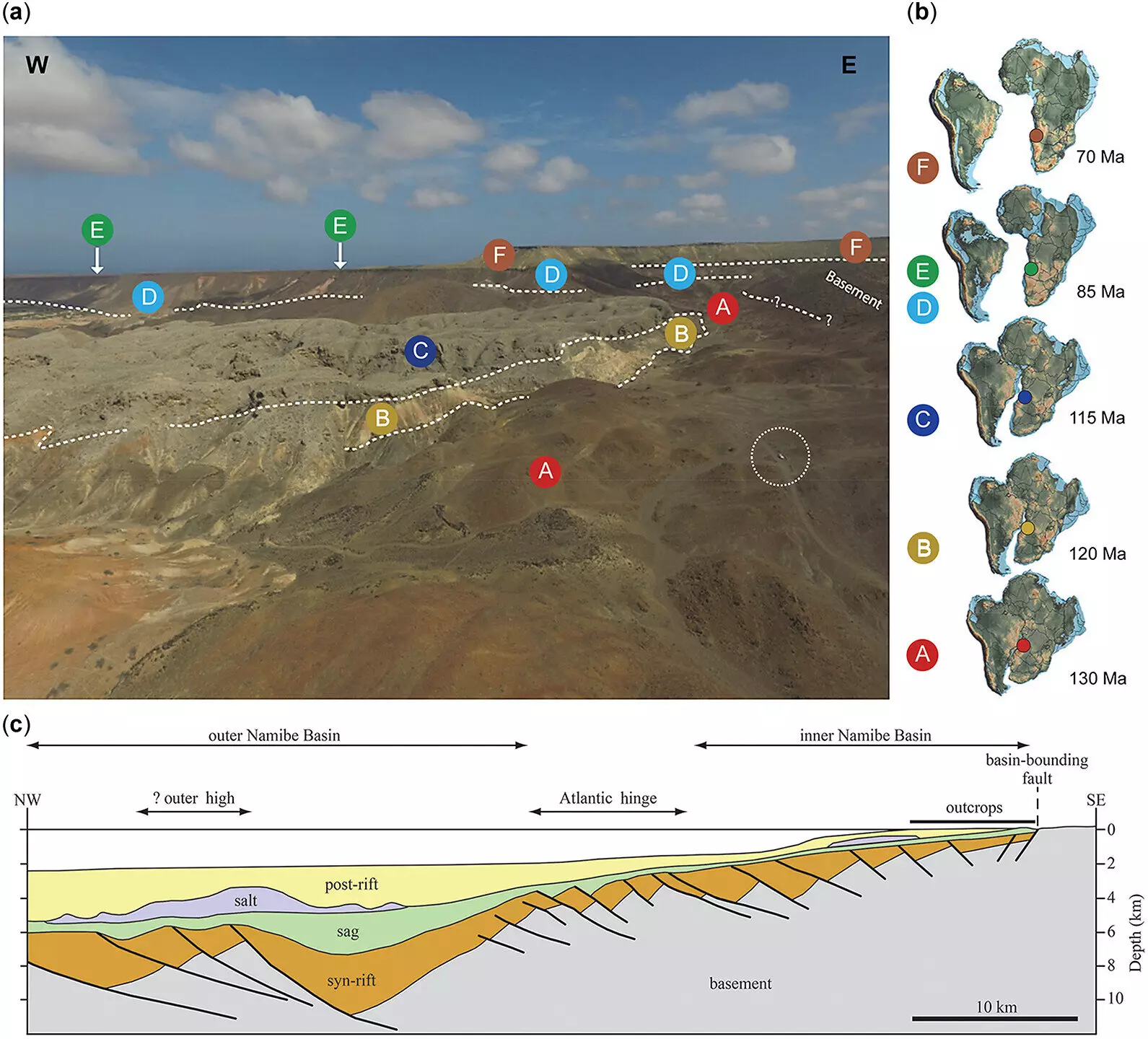An SMU-led research team has unearthed a treasure trove of ancient rocks and fossils in Angola that provide a vivid glimpse into Earth’s history. These rocks and fossils from long-extinct marine reptiles offer a clear picture of a crucial part of our planet’s past – the splitting of South America and Africa and the subsequent formation of the South Atlantic Ocean. The discovery showcases the intricate “jigsaw-puzzle fit” between the western coast of Africa and the eastern coast of South America, once part of the supercontinent Gondwana that broke off from the larger landmass of Pangea. Angola’s southern coast, where the samples were excavated, offers one of the most complete geological records ever recorded on land of the two continents drifting apart and the birth of the South Atlantic Ocean.
The rocks and fossils found in Angola date back from 130 million years ago to 71 million years ago, providing a comprehensive timeline of how Africa and South America started to diverge approximately 140 million years ago. This gradual separation caused rifts in Earth’s crust to open along pre-existing weaknesses, allowing magma to rise from the mantle and create a new oceanic crust. The shifting tectonic plates beneath the two continents gradually pushed them apart, eventually leading to the formation of the South Atlantic Ocean. While previous evidence of these events has been gathered through geophysics and ocean floor cores, Angola’s rocks and fossils present a unique opportunity to witness these geological phenomena up close and in person.
Angola’s geological formations allow scientists to trace the evolution of the South Atlantic Ocean with remarkable clarity. By analyzing the rock formations across eight different locations on the coast, researchers could identify distinct sediment types indicative of various stages in the region’s history. Lava fields, faults, and salt deposits provide evidence of volcanic activity, continental rifts, and oceanic flooding and evaporation, respectively. The discovery of marine reptile fossils from the late Cretaceous Period further enriches our understanding of how life thrived in the newly formed Atlantic Ocean. This interdisciplinary approach, combining paleontology, geology, and other fields, has enabled researchers to piece together a comprehensive narrative of Angola’s geological past.
The research in Angola was a collaborative endeavor involving experts from various disciplines, including paleontology, geology, and paleoecology. By pooling their knowledge and expertise, the team was able to reconstruct the environmental conditions that prevailed in the region millions of years ago. The participation of Angolan researchers such as Nair de Sousa and Pedro Claude Nsungani played a vital role in this research, bringing local insights and expertise to the international team. The fossils discovered in Angola are now on display at the Smithsonian’s National Museum of Natural History, showcasing the mesmerizing world of “Sea Monsters Unearthed: Life in Angola’s Ancient Seas,” a testament to the rich geological heritage of this African nation.
The geological discoveries in Angola offer a fascinating window into Earth’s past, shedding light on pivotal events such as the splitting of continents and the formation of oceans. The rocks and fossils unearthed in this region provide a tangible link to a bygone era, allowing scientists and enthusiasts alike to walk through the chapters of our planet’s history. Angola’s geological significance underscores the importance of preserving and studying Earth’s ancient past to better understand the forces that have shaped our world.


Leave a Reply